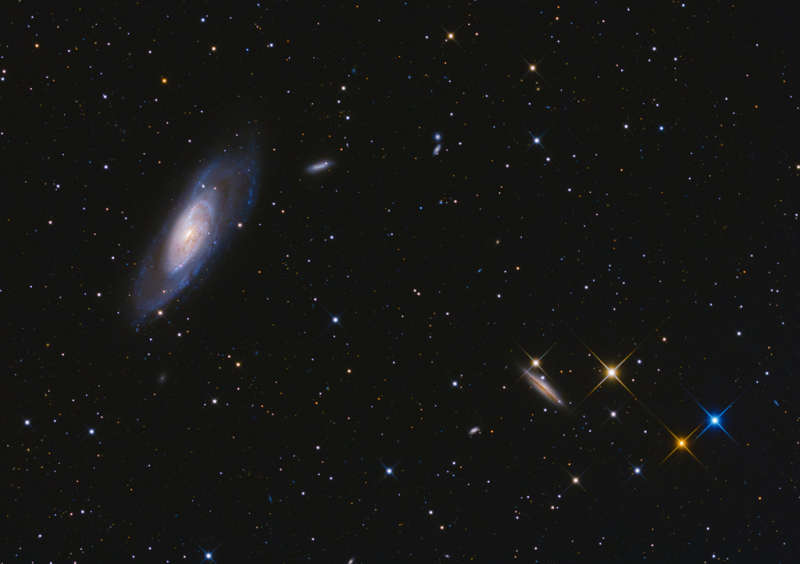Credit & Copyright: Joonhwa Lee
Explanation:
Big, bright, beautiful
spiral, Messier 106 dominates this cosmic
vista.
The nearly two degree wide
telescopic
field of view looks toward the well-trained constellation
Canes Venatici, near the handle of the Big Dipper.
Also known as NGC 4258, M106 is about 80,000 light-years across and
23.5 million light-years away, the largest member of the
Canes
II galaxy group.
For a far far away galaxy, the distance to M106 is well-known
in part because it can be
directly measured
by tracking this galaxy's remarkable maser, or microwave laser emission.
Very rare but naturally occurring, the
maser
emission is produced
by water molecules in molecular clouds orbiting its
active
galactic nucleus.
Another prominent spiral galaxy on the scene, viewed nearly
edge-on,
is NGC 4217 below and right of M106.
The distance to NGC 4217 is much less well-known, estimated
to be about 60 million light-years, but the bright
spiky
stars are in the foreground, well inside our own Milky Way galaxy.
Even the existence of galaxies beyond the Milky Way
was questioned 100 years ago in
astronomy's
Great Debate.
Experts Debate:
How will humanity first discover
extraterrestrial life?
1999 2000 2001 2002 2003 2004 2005 2006 2007 2008 2009 2010 2011 2012 2013 2014 2015 2016 2017 2018 2019 2020 2021 2022 2023 2024 2025 |
Yanvar' Fevral' Mart Aprel' Mai Iyun' Iyul' Avgust Sentyabr' Oktyabr' Noyabr' Dekabr' |
NASA Web Site Statements, Warnings, and Disclaimers
NASA Official: Jay Norris. Specific rights apply.
A service of: LHEA at NASA / GSFC
& Michigan Tech. U.
|
Publikacii s klyuchevymi slovami:
M 106 - spiral galaxy - spiral'naya galaktika
Publikacii so slovami: M 106 - spiral galaxy - spiral'naya galaktika | |
Sm. takzhe:
Vse publikacii na tu zhe temu >> | |
